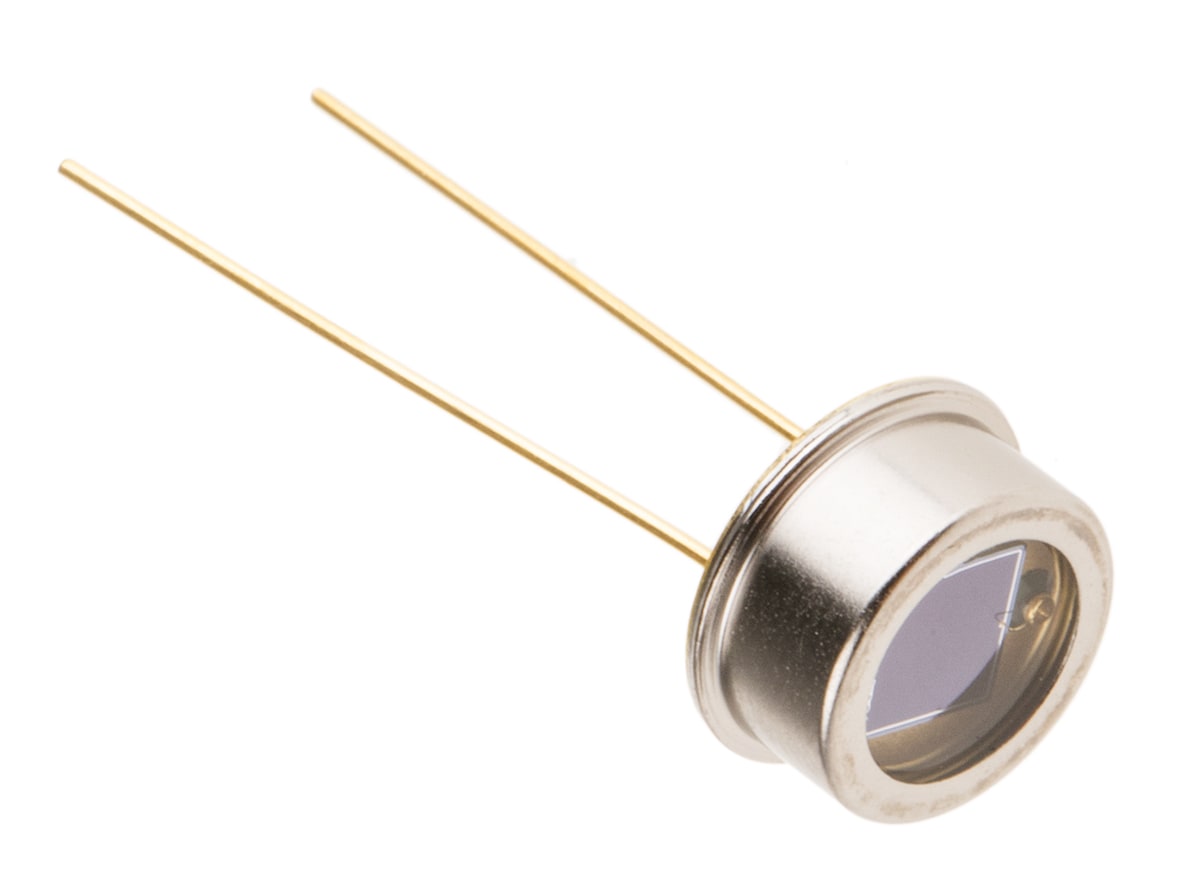Contents

Source: RS Components
Understanding Photodiodes: Operation and Applications
Introduction to Photodiodes
Photodiodes are semiconductor devices commonly used as photodetectors in various applications. They have largely replaced vacuum phototubes due to their efficiency and reliability. Photodiodes consist of a p-n junction, with some types containing an intrinsic layer between the n and p layers. This intrinsic layer is found in p-i-n photodiodes, where light absorption generates electron-hole pairs, leading to a photocurrent.
Design and Operation
A typical p-i-n photodiode design includes an intrinsic region between n-doped and p-doped layers. When light is absorbed in this region, electron-hole pairs are created, resulting in a photocurrent. The generated photocurrent is collected through electrical contacts (anode and cathode). The responsivity of a photodiode depends on the material used and its absorption characteristics for the relevant optical wavelength.
Operation Modes
Photodiodes can operate in two modes: photovoltaic and photoconductive. In the photovoltaic mode, the photodiode generates a voltage proportional to the incident light, but with a nonlinear response. In the photoconductive mode, a reverse voltage is applied to measure the resulting photocurrent, offering a linear response over a wide range of light powers.
Key Properties
Important properties of photodiodes include responsivity (photocurrent per unit optical power), active area, breakdown voltage, maximum photocurrent, dark current, and speed. The choice of semiconductor material (e.g., silicon, gallium arsenide, germanium) affects the performance of the photodiode in terms of sensitivity, speed, and spectral range.
Bandwidth and Speed
The speed of a photodiode is limited by electrical parameters and internal effects such as carrier transit time. Bandwidth can be increased by using advanced designs like waveguide photodiodes or traveling-wave photodiodes. Fast photodiodes, made from materials like InGaAs, offer high detection bandwidths in the gigahertz range.
Applications and Advancements
Photodiodes find applications in various fields such as telecommunications, remote sensing, medical devices, and scientific instruments. Advanced photodiode designs, including sandwich detectors and photodiode arrays, offer improved performance for specific applications like temperature measurements and precision sensing.
Conclusion
In conclusion, photodiodes are essential components in optoelectronic systems, providing reliable light detection and measurement capabilities. Understanding the operation and key properties of photodiodes is crucial for optimizing their performance in different applications. Ongoing advancements in photodiode technology continue to enhance their speed, sensitivity, and spectral range for diverse industrial and scientific uses.

Source: Fraunhofer-Gesellschaft
Feel free to comment your thoughts.



